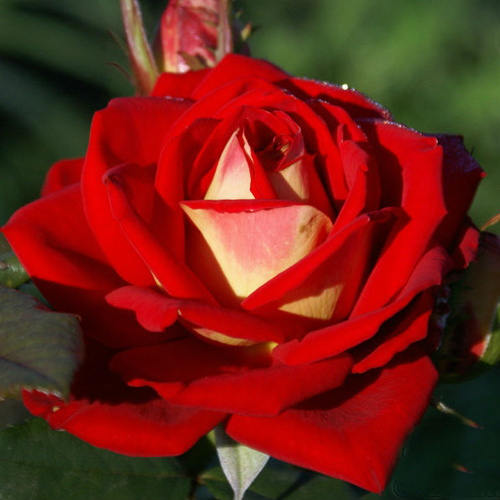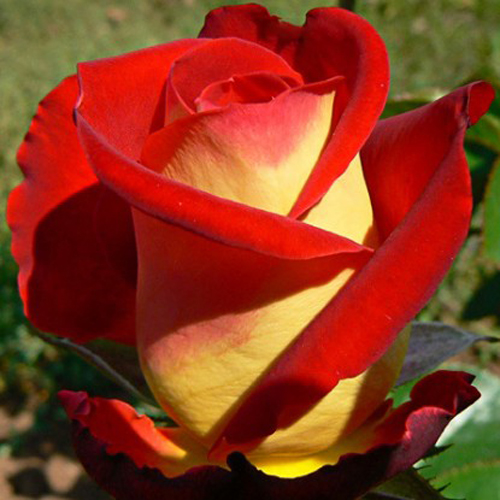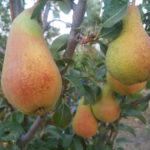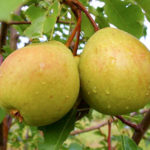Rose Friendship
Two-tone roses cannot but attract attention. They differ from plants with a classic monochromatic color in a more original appearance, which inevitably suggests the endless talent of modern breeders. A striking example of such a culture is the Friendship variety.
History of origin
This plant is a novelty in breeding. It was launched in 2004 in France. The famous rose-growing company Meilland International became the creator of the variety. In catalogs and other information sources, this culture can also be found under the name Meilambra. Perennial belongs at the same time to the hybrid tea group of roses and cut varieties.

Description of appearance and features
Rose Friendship is a pretty attractive plant. It is a neat, compact, branching bush with erect shoots, reaching a maximum height of 100 cm.The diameter of its crown is about 0.6 m.The stems of the decorative perennial are covered with medium-sized thorns, the foliage pleases the eye with a dark green tint and glossy shine. The most impressive thing about this variety is, of course, the flowers. Not too large (from 10 to 12 cm in diameter), double, single, less often - located in inflorescences of 2 - 3 pieces, they consist of 40 - 45 petals: saturated purple-red on the inside and light yellow - outside. The buds of a charming plant are tall, dense, goblet, no more than 9 cm in size. The highlight of the sophisticated Frenchwoman is a unique aroma, in which notes of fresh tea leaves and juicy fruits are guessed. The plant begins to bloom in June and ends in late autumn. The flowering of the tea hybrid can be called almost continuous throughout the season, and, in addition, lush and abundant. Each flower stays on the bush for up to 15 days.
An excellent European variety, it is highly resistant to disease. It tolerates temperature changes well, has high frost resistance. The flowers of culture are absolutely not afraid of rain, which cannot be said about the heat - in the summer heat, tender petals tend to bake, and the buds do not want to open.
Growing and care
For planting a French beauty, moderately sunny or semi-shady places are suitable, where the rose will not be exposed to direct sunlight and sweltering heat. It is important to ensure normal air circulation near the plant. This measure additionally allows the crop to be insured against the occurrence of fungal diseases and insect pests. However, cold drafts are contraindicated for her. Shrubs should not be placed in lowlands. The soil of the Friendship rose for normal growth, development and full flowering requires loose, light, slightly acidic, with a large amount of nutrients, including humus. At the bottom of the hole there should be a thick layer of drainage material, for which fine crushed stone, gravel or perlite are suitable. The depth of the landing pit is made at least half a meter. Plant roots are soaked in water for several hours before planting. If you use ordinary garden or vegetable garden soil, pre-mix it with humus, peat, sand and vermicompost.

The shrub needs the usual care measures: watering, feeding, loosening and mulching the soil under the bush, weeding, pruning. To moisten the soil under a perennial, they use slightly warmed up in the sun, necessarily settled water. For one rose, 1 - 1.5 buckets of liquid are consumed at a time. The frequency of this procedure is 1 - 2 times a week. The plant needs timely feeding. In the spring, nitrogen fertilizers are applied under the crop, in the summer - complex fertilizers, at the beginning of autumn - phosphorus-potassium fertilizers. Without enough nutrients, a tea hybrid will not delight you with enchanting, abundant flowering, but overfeeding will also hurt a beauty. It is necessary to loosen the soil under the perennial only in a wet state. This should be done carefully so as not to damage the roots of the culture.Along the way, weeds are harvested that grow in the zone of the trunk circle. After that, the specified sector is covered with mulch: peat, hay or sawdust. It will keep moisture in the soil for a long time.
Plant pruning should be done in the spring and fall. At the beginning of the period of active growth, this measure is of a sanitary nature: the bush gets rid of damaged, dead and too weak shoots. In the fall, they perform similar actions, but they also shorten the strong branches of the perennial. This is how the tea hybrid is prepared for winter. In the summer, it is necessary to remove faded inflorescences from the plant. Culture needs shelter with the onset of cold weather. This is especially true for a plant cultivated in a harsh climate. A special covering material or ordinary spruce branches are used as insulation. But first, do not forget to spud the plant with dry soil. Since the ornamental shrub cannot boast of excellent immunity, to reduce the risk of developing diseases on it, it is worth treating the shoots several times during the growing season with a fungicide solution. The rosette can be protected from pests by implementing the same preventive measure, but only by using an insecticidal preparation.
Use cases
Rose Friendship looks very stylish both in a regular flower garden and in a rose garden. It is used for landscaping a wide variety of areas: parks, squares, country gardens, small gardens. This culture looks great in group and mixed compositions. The perennial looks very harmonious with plants whose buds are colored lilac, blue, yellow, white or cream. But cultures with orange, pink, purple inflorescences are not suitable for the role of companions for our heroine. The variety can be used to decorate flower beds, borders, hedges. It is planted near the gazebos, the facade of the dwelling, the fence, garden benches and fountains, at the front entrance to the house. The plants of this rose look especially impressive against the background of the emerald green grass lawn, dark green needles of evergreen crops and the white wall of the house. If you want to emphasize the Friendship rose, place the bush in the foreground of the site. Of the conifers, thuja, boxwood, juniper, low spruce and mountain pines are combined with it. The incomparable flowers of a noble plant for a long time - up to 2 weeks - stand in the cut, without fading and without losing their original beauty and shape, therefore the variety is loved by florists.








